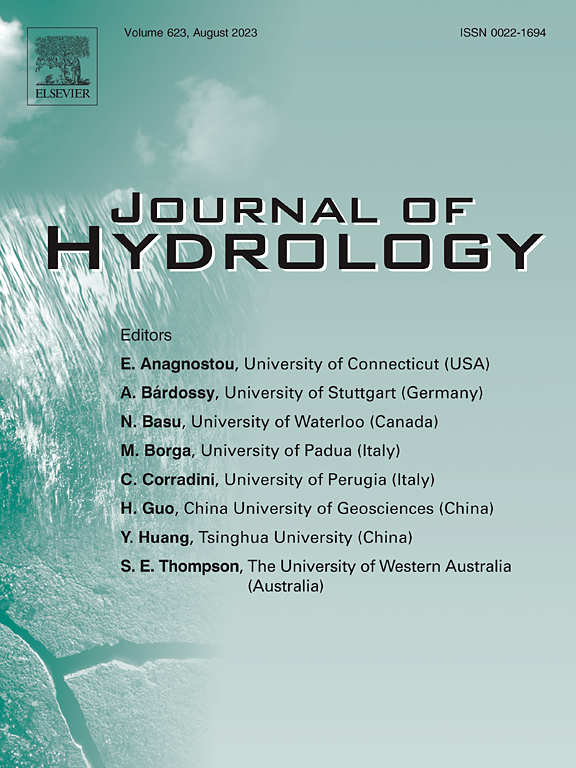Time of emergence (TOE) of potential aridification in the western United States
IF 5.9
1区 地球科学
Q1 ENGINEERING, CIVIL
引用次数: 0
Abstract
Quantifying the timing of hydroclimatic changes due to global warming is crucial for water resources management. This study investigates the hydroclimatic changes based on the Time of Emergence (TOE) analysis in the western United States, with a focus on the impacts of climate change and aridification. Utilizing the Community Earth System Model Version 2 Large Ensemble (CESM2-LE), we investigate projected changes in temperature, precipitation, evapotranspiration, runoff, snow, and Total Water Storage (TWS). Despite precipitation increases in the future, our results project a robust decrease in TWS by the end of the 21st century, mainly driven by higher evapotranspiration and reduced snow. Total Water Storage, which is an integrated measure of all terrestrial hydrological processes, exhibits a more pronounced climate change signal compared to precipitation. Significant regional variations also emerge in the TOE of TWS, with states around the interior and high-elevation regions experiencing changes faster, as early as in the 2030 s, than those on the Pacific Coast or in southern regions. The study highlights the Upper Colorado River Basin as an emerging aridification hotspot, emphasizing the need for targeted research and adaptive water resource management strategies. This research underscores the importance of jointly considering TWS and the aridity index to comprehensively assess hydrologic regime shifts under global warming.
Plain Language Summary
Climate change is leading to shifts in temperature, rainfall, evapotranspiration, river flow, snow, and other factors. These changes collectively affect what we call the ’hydroclimate,’ which includes changes in groundwater and aridity. Our study finds that as climate change progresses, there will be a noticeable decrease in groundwater, particularly in the interior states. Additionally, we observe an expansion of dry areas, especially in the Upper Colorado River Basin due to reduced snow. This information is crucial for policymakers who need to plan and prepare for future water resource management in the face of a warming climate.
求助全文
约1分钟内获得全文
求助全文
来源期刊

Journal of Hydrology
地学-地球科学综合
CiteScore
11.00
自引率
12.50%
发文量
1309
审稿时长
7.5 months
期刊介绍:
The Journal of Hydrology publishes original research papers and comprehensive reviews in all the subfields of the hydrological sciences including water based management and policy issues that impact on economics and society. These comprise, but are not limited to the physical, chemical, biogeochemical, stochastic and systems aspects of surface and groundwater hydrology, hydrometeorology and hydrogeology. Relevant topics incorporating the insights and methodologies of disciplines such as climatology, water resource systems, hydraulics, agrohydrology, geomorphology, soil science, instrumentation and remote sensing, civil and environmental engineering are included. Social science perspectives on hydrological problems such as resource and ecological economics, environmental sociology, psychology and behavioural science, management and policy analysis are also invited. Multi-and interdisciplinary analyses of hydrological problems are within scope. The science published in the Journal of Hydrology is relevant to catchment scales rather than exclusively to a local scale or site.
 求助内容:
求助内容: 应助结果提醒方式:
应助结果提醒方式:


